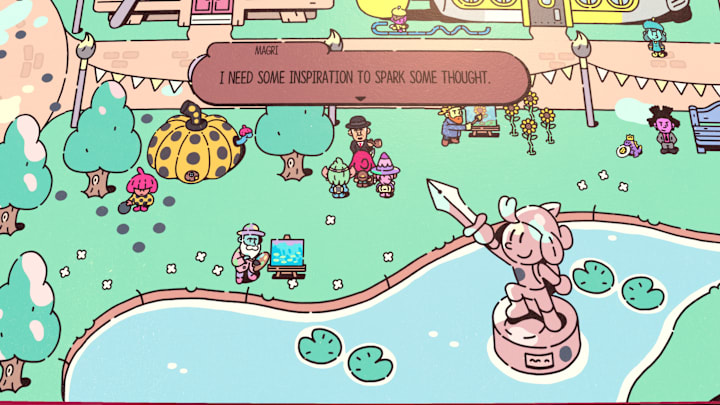The Plucky Squire review: “made for kids” but still great fun for anyone

It’s difficult to make a game for kids that isn’t boring for adults – well, it’s difficult for anyone that isn’t Nintendo, at least. It’s especially a problem in the modern era where most developers that make games aimed at kids have abandoned consoles in favor of mobile. It leaves me longing for the era of the DS where a game like Scribblenauts could be “made for kids” but still great fun for anyone.
Even games that go for that same sweet and cozy vibe often prove too complex for young gamers, either mechanically, like Snipperclips, or narratively, like Thomas Was Alone. There’s a tough balance to strike and most devs (again, except Nintendo) often have trouble finding it. Expertly maintaining this balance is just one of the things I find impressive about The Plucky Squire.
Despite what my colleagues in their 30s might tell you, I am not a child, but I do remember being one, and I know that if I had a game like The Plucky Squire back then, I would’ve been blown away by what it has to offer.
You play as the titular plucky squire, Jot, a young boy who is also the hero of the land of Mojo, the most colorful and wonderful land there is. He goes on adventures to defeat the evil wizard Humgrump, always coming out on top – that is, until one day when Humgrump discovers a strange Metamagic that he uses to eject Jot from the book and into the real world. From there, Jot gains the power to travel between the book and the real world, which is where this game’s mechanics really start to cook.
On one side, you have the top-down 2D sections where you’ll find lines of narration that appear in the picture book. You’re then able to play around with some of the words in these lines to alter the world around you. For example, if you come to a gate that’s closed up tight, all you need to do is find the word “open” somewhere else in the book, insert it into the sentence, and you can continue on your way.
This scales in complexity very well, as later on you get new abilities that allow you to do things like turn the pages of the book, meaning you can go back in your adventure to bring elements from previous puzzles into the current one. It doesn’t take it too far, though. I can see another world in which this game went to the mind-bending heights of a game like Baba Is You, and maybe that would be awesome, but it’s not what The Plucky Squire wants to be.
Instead, I found the level just right where, although I was rarely stumped for more than a few seconds, I had to apply enough thought to each puzzle that I felt satisfied when I solved it – especially towards the end of the game. Even when the puzzles do get a little trickier, though, the consideration is always there for those who need extra help, as the good wizard Moonbeard and his Minibeard allies will always be nearby to give you hints.
You’ll regularly have to come out of the book, though, either to help solve a puzzle in the 2D realm or to get a new power-up, and there, things feel very different but just as fun. Here, you’re running around various constructs on the desk of a young child, meaning you’ll be clambering over cardboard forts, building blocks, and various crafting implements as you battle monsters in gameplay sections that are typically more action-focused.
The combat is super simple but I didn’t want it to be anything more. It’s mostly about mashing the attack button and occasionally dodging at the right time, but you can mix it up with a couple of unlockable special moves if you want. It does its job of giving you a little break from the puzzling by bashing away at monsters for a little while.
Then occasionally, it turns into a different game entirely. Both in the 2D and 3D sections, you’ll get to play unique minigames to reach your goal. These can include a turn-based JRPG-style battle with a Magic: The Gathering elf, a boxing match with an angry honey badger, or a game of Puzzle Bobble against an evil wizard. It keeps me wanting to push on and see what fun little idea is around the next corner because the game bursts with creativity.
That brings me to the one thing you probably already knew about The Plucky Squire, which is that it’s a beautiful game. When you’re in the storybook everything has a brilliant hand-drawn quality that jumps off the page with bright colors and creates the authentic feel of this being a real in-universe children’s book that is beloved by kids the world over.
It’s not all about the 2D side of things, though, as all of these characters have been carefully designed to be just as appealing in 3D as Jot has an equally vibrant plasticine look when he’s out of the book. There’s clearly been a lot of consideration into how the different elements from this world should feel when sat next to each other too.
The desk in the child’s room is full of bright colors too, but they feel markedly different from the book characters, keeping a light-hearted vibe while still emphasizing that Jot and the monsters are out of their world, which is a nice narrative touch.
Speaking of narrative, it too manages to stay relatively simple while still being engaging. After Jot is cast out of the book he learns the truth about his reality but thankfully it’s played very light – this isn’t some existential crisis plot about the nature of “what is real?”. Instead, the focus is on the child who owns the book, with the stakes being that if Humgrump ruins the story, they’ll never grow up to be the celebrated artist they’re destined to be, becoming something boring and sad like an accountant, undertaker, or video game journalist instead.
It helps that the whole thing is told by a narrator who sounds exactly like what you’d expect a sweet storybook narrator to sound like, wrapping the whole thing up a cozy bow that manages to hit some surprisingly funny jokes out of nowhere too.
All this comes together to make a warm hug of a game. The Plucky Squire gives you simple combat and clever puzzles that are just the right amount of difficult without becoming frustrating. Then it’s all wrapped up in two gorgeously colorful art styles that make it stand out from anything I’ve played in a long time, with a story that made me smile at every turn.
Score: 8/10
Version tested: PC (Steam)
